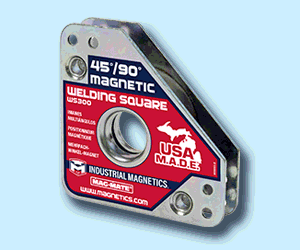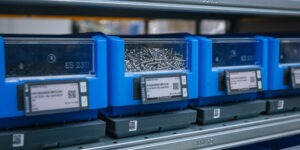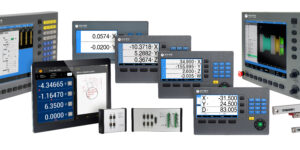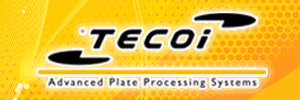TOUGH TIMES: THE IMPERATIVE FOR PROCESS CONTROL
Mike Riley presents a simple model from industrial metrology supplier Renishaw Inc. that explains the sources of process non-conformance and the process control methods to address them – something manufacturers will need if and when times get tough.
Posted: September 2, 2011
This simple model from industrial metrology supplier Renishaw explains the sources of process non-conformance and the process control methods to address them – something manufacturers will need if and when times get tough.
It was only a matter of time till the Honorables struck again, this time mishandling the debt crisis so badly that Standard & Poor’s downgraded our U.S. AAA credit rating to AA+ for the first time in history, citing political risks and a rising debt burden. Even worse, the public relations fiasco that followed has the government revising its growth rates of the recent economic recovery and rethinking a double-dip recession. Confidence is shrinking in what lies ahead.
Are we returning to tough times? If so, many manufacturers will jump to reduce their operating costs without having to buy more productive machinery. But how can they radically reduce costs without replacing existing equipment?
Earlier this year, Jeff Seliga of Renishaw Inc. (Hoffman Estates, IL) distributed a paper titled Survival of the Fittest – The Process Control Imperative that explores four areas where substantial savings can be found for those who are prepared to change the way they control their machining processes. This timely analysis (which is excerpted below) answers such questions as, “how much process control is necessary to run an unmanned operation?” See if there are any insights you can use.
WHERE ARE THE OPPORTUNITIES TO REDUCE COSTS?
If we are to . . . reduce manning levels, reduce unproductive time such as setting or waiting for operators, reduce scrap, rework and concessions, or reduce inspection costs . . . then we must focus on eliminating manual processes and directly address the root causes of these process failures. These two goals go hand in hand, as much of the nonconformance in many processes arises from human intervention. But removing manual processes is not enough. We must also pay close attention to the operating environment, the machine itself, setting processes before we start cutting, and in-process controls once production starts.
LEAN ONLY TAKES YOU SO FAR
Lean manufacturing techniques help to streamline the flow of work through factories, eliminating waste, reducing lead times and minimizing work in progress. These valuable savings only work well if the machining process itself is predictable, repeatable and reliably producing conforming parts. In the absence of this, bottlenecks, delays and poor deliveries are impossible to eliminate. The key to predictable productivity is to tackle variation at the source, isolating the root causes and addressing them individually. As each underlying source of variation is addressed, the task of controlling the output of the process becomes much simpler.
THE PRODUCTIVE PROCESS PYRAMID™
The Pyramid (see Figure 1) comprises four layers of process control which build upon one another. Each must be brought to bear to deliver regularly conforming parts. Starting from the bottom:
• The process foundationlayer is about providing stable conditions in which the machine can do its work by using preventative controls to reduce the number of sources of variation before machining ever starts.
• Next up is the process setting layer that deals with predictable sources of variation, such as the location of the part, the size of the tools and offsets on the machine tool that could otherwise cause the first part to be nonconforming.
• Then comes in-process control that tackles sources of variation inherent to machining, such as tool wear and temperature variation, by providing intelligent feedback to the process as metal cutting proceeds.
• The final layer is post-process monitoring, in which firstly the process and ultimately the part are checked against their respective specifications. Aspects of this can be done on the machine, but most tasks are done offline.
If high process capability and predictable productivity are the goals, then the best approach is to work from the bottom up through these layers. At the base of the Pyramid, the tasks are more generic and easily applied broadly. Progressing up through the layers, the controls become more process-specific and their scope narrows. It makes sense to apply these narrower controls only once the underlying variation has been addressed, or the return on this investment will be diluted. Let’s look at each layer in turn in a bit more detail.
PROCESS FOUNDATION
Controls in the base layer of the Pyramid are targeted at maximizing the stability of the environment in which the process is to be performed. These preventative controls stop special causes of variation having an impact on the machining process. Controls in the process foundation layer include:
• Design for manufacture approaches product and process design based on a thorough understanding of current capability and a drive towards best practice, rather than ‘reinvention of the wheel’. Often based around a ‘standard features’ approach, it involves rationalization of tooling and standardization of machining parameters. It reduces variation between processes and enables engineers to make far-reaching improvements when a new best practice is identified.
• Control of process inputs uses failure mode and effects analysis (FMEA) and similar techniques to understand and control all of the upstream factors that can affect machining process outcomes, such as ensuring consistent cutter geometry, controlling clamping forces, locking down part programs and billet preparation. If conditions are consistent at the start of the process, they are more likely to be consistent at the end.
• Environmental stability addresses those external sources of non-conformance that cannot be eliminated in advance because they are inherent to the operating environment. These include ambient temperature variation, heat generated while machining, machine and fixture cleanliness, tool life management, and unexpected events such as tool breakage and power outages. The solution for many of these variation problems is through operating disciplines.
• An inaccurate machine cannot make consistently accurate parts. Machine condition optimization involves rigorous performance assessment, calibration and (where required) refurbishment to bring the machine’s performance in line with the process requirements. Afterwards, regular operator-driven monitoring checks confirm the machine’s ongoing suitability for production or highlight the need for maintenance intervention.
The cost reduction benefits of the process foundation layer are:
• Increased machine availability – avoid unplanned downtime by tracking machine performance trends before they cause process problems.
• Increased process capability – better machine accuracy and repeatability, combined with less variation from the environment and process inputs, makes parts more consistent and reduces non-conformance.
• Guarantee quality – part-to-part variation, scrap, rework and concessions are all reduced by typically 25 percent.
• Focus engineering on proactive tasks – less ‘noise’ allows engineers to stop firefighting and start making lasting improvements.
• Foundation for automation – machines performing at optimum enables confidence in automating processes.
PROCESS SETTING
The second Pyramid layer moves towards a ‘green button’ process with getting ready to machine. These predictive controls tackle sources of error in the set-up of the machine, part, tool and probe that are always present to varying degrees and which must be dealt with if the first component is to be machined correctly. Building on the stability introduced by the process foundation layer, process setting controls help to eliminate human error by automating manual processes. These controls include:
• Though often overlooked, machine setting establishes the relationships between key moving elements of the machine (e.g. the milling spindle to the machine bed, or the pivot point of the milling spindle on a mill-turn machine) that are affected by thermal drift, where some variation is inherent in even the most stable environment. Uncorrected machine errors can dominate process non-conformance and lead to extended setting times as their effects can be confused with other sources of process variation. The good news is that these errors can be measured and eliminated by simple on-machine probing checks.
• Probe setting uses a datum probe to measure accurately on the machine. For inspection probes, this involves measuring the size and position of the stylus, typically using a datum sphere or ring gauge. For tool setting probes, a tool arbor is used to establish the position of the stylus or laser beam. Probe calibration is a weekly control that ensures other measurements on the machine remain reliable.
• Part setting locates and orients the component so that machining can be aligned with it. A touch probe can find datum positions and angles, with work coordinates being updated automatically. In more complex situations, a probe can measure local surface forms so that a CAM package can compute tool paths to blend surfaces. Part setting reduces fixture costs, eliminates operator intervention and setting machining off on the wrong foot.
















